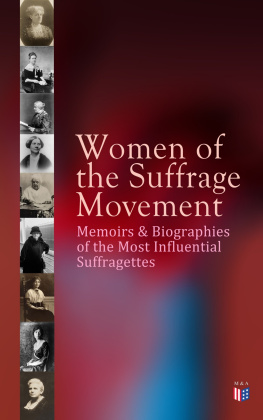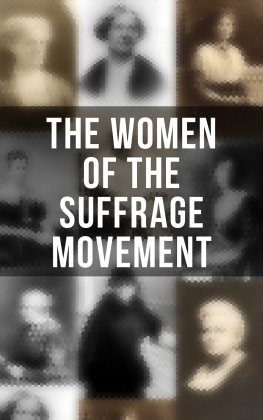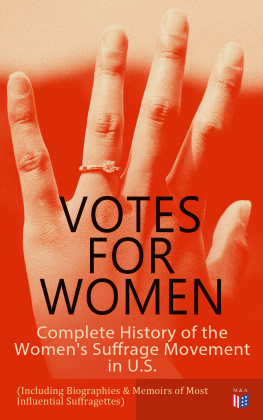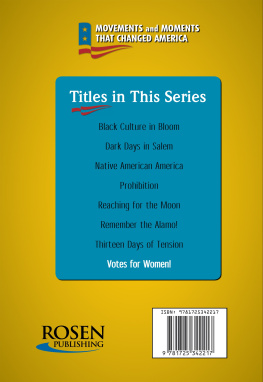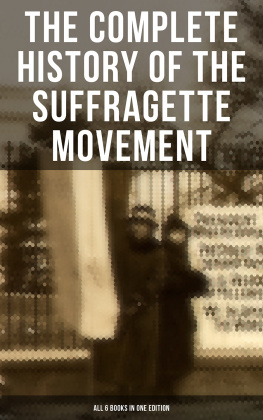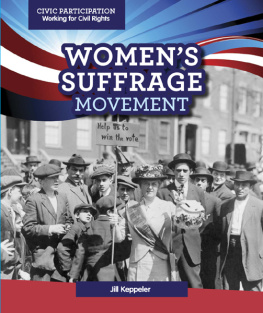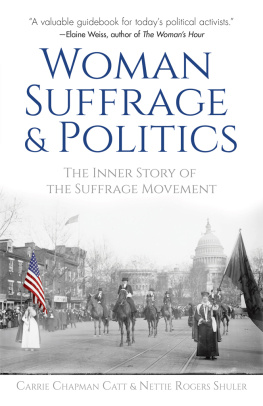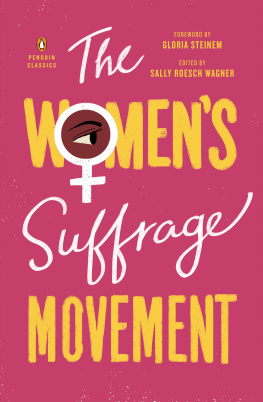Jane Addams - Women of the Suffrage Movement: Memoirs & Biographies of the Most Influential Suffragettes: Including 6 Volume History of Womens Suffrage
Here you can read online Jane Addams - Women of the Suffrage Movement: Memoirs & Biographies of the Most Influential Suffragettes: Including 6 Volume History of Womens Suffrage full text of the book (entire story) in english for free. Download pdf and epub, get meaning, cover and reviews about this ebook. year: 2018, publisher: Madison & Adams Press, genre: Non-fiction / History. Description of the work, (preface) as well as reviews are available. Best literature library LitArk.com created for fans of good reading and offers a wide selection of genres:
Romance novel
Science fiction
Adventure
Detective
Science
History
Home and family
Prose
Art
Politics
Computer
Non-fiction
Religion
Business
Children
Humor
Choose a favorite category and find really read worthwhile books. Enjoy immersion in the world of imagination, feel the emotions of the characters or learn something new for yourself, make an fascinating discovery.
- Book:Women of the Suffrage Movement: Memoirs & Biographies of the Most Influential Suffragettes: Including 6 Volume History of Womens Suffrage
- Author:
- Publisher:Madison & Adams Press
- Genre:
- Year:2018
- Rating:3 / 5
- Favourites:Add to favourites
- Your mark:
Women of the Suffrage Movement: Memoirs & Biographies of the Most Influential Suffragettes: Including 6 Volume History of Womens Suffrage: summary, description and annotation
We offer to read an annotation, description, summary or preface (depends on what the author of the book "Women of the Suffrage Movement: Memoirs & Biographies of the Most Influential Suffragettes: Including 6 Volume History of Womens Suffrage" wrote himself). If you haven't found the necessary information about the book — write in the comments, we will try to find it.
This edition includes as well the complete 6 volume history of the movement - from its beginnings through the ratification of the Nineteenth Amendment to the U.S. Constitution, which enfranchised women in the U.S. in 1920.
Elizabeth Cady Stanton (1815-1902) was an American suffragist, social activist, abolitionist, and leading figure of the early womens rights movement.
Susan Brownell Anthony (1820-1906) was an American social reformer and womens rights activist who played a pivotal role in the womens suffrage movement.
Emmeline Pankhurst (1858-1928) was a British political activist and leader of the British suffragette movement who helped women win the right to vote.
Anna Howard Shaw (1847-1919) was a leader of the womens suffrage movement in the United States. She was also a physician and one of the first ordained female Methodist ministers in the United States.
Dame Millicent Garrett Fawcett (1847-1929) was a British feminist, intellectual, political and union leader, and writer.
Jane Addams (1860-1935), known as the mother of social work, was a pioneer American settlement activist, public philosopher, sociologist, protestor, author, and leader in womens suffrage and world peace.
Lucy Stone (1818-1893) was a prominent U.S. orator, abolitionist, and suffragist, and a vocal advocate and organizer promoting rights for women.
Carrie Chapman Catt (1859-1947) was an American womens suffrage leader who campaigned for the Nineteenth Amendment to the United States Constitution, which gave U.S. women the right to vote in 1920.
Alice Stokes Paul (1885-1977) was an American suffragist, feminist, and womens rights activist.
Jane Addams: author's other books
Who wrote Women of the Suffrage Movement: Memoirs & Biographies of the Most Influential Suffragettes: Including 6 Volume History of Womens Suffrage? Find out the surname, the name of the author of the book and a list of all author's works by series.

